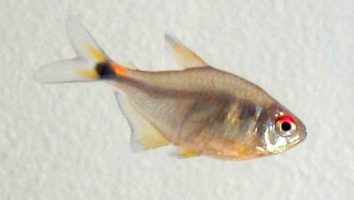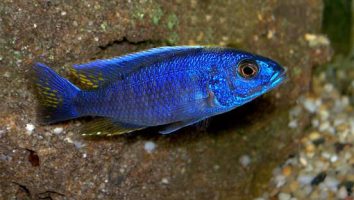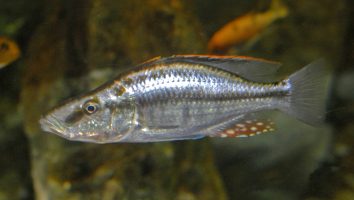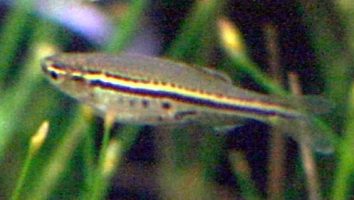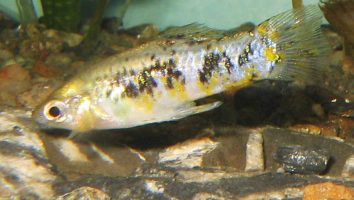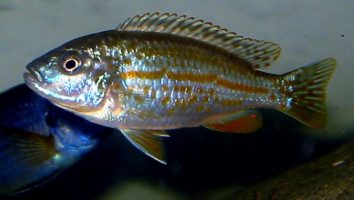The sun catfish is a beautiful and unique freshwater fish that is perfect for any aquarium.
They are relatively easy to care for and are very peaceful, making them a great addition to any community tank.
Sun catfish are also very active and love to swim, so they need a tank that is at least 30 gallons.
They are also a very hardy fish, so they are a good choice for beginner fishkeepers.
So if you are looking for a new addition to your aquarium, then the sun catfish might be the perfect fish for you!
Table of contents
Species overview
The sun catfish (scientific name: Horabagrus brachysoma) is a species of freshwater catfish that’s found throughout Southeast Asia.
They prefer slow-moving water with a lot of vegetation and hiding places. This is something that’s common to many species of freshwater catfish.
Sun catfish are omnivores, which means they’ll eat just about anything. In the wild, their diet consists of plants, small invertebrates, and even other fish.
These fish are fairly popular in the aquarium trade. They’re known for being hardy and adaptable, which makes them a good choice for beginner fish keepers.
One of the most notable things about sun catfish is their unique coloration. They are brown with black spots and a bright orange belly. This makes them quite striking and makes them a popular choice for many aquarium hobbyists.
Appearance
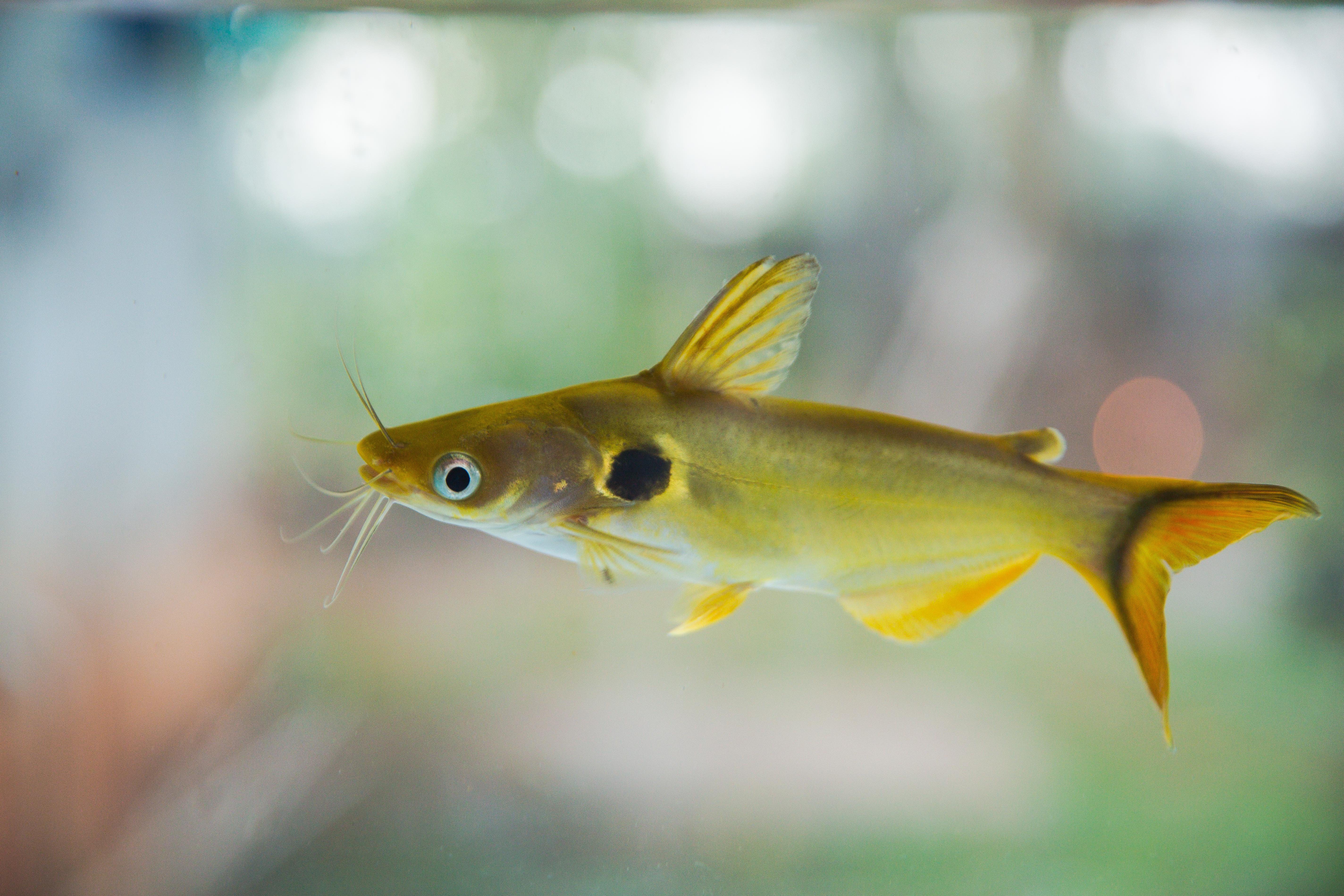
The first thing you’ll notice about the Sun Catfish is their long and slender body shape. They’re a very streamlined fish that tapers off at the end to form a point.
This point is their forked caudal fin which is slightly taller than their dorsal fin. Speaking of the dorsal fin, it’s rather short and begins about two-thirds of the way back on the fish’s body.
The Sun Catfish also has a very short anal fin that’s about the same size as their dorsal fin. Both of these fins are a bit taller in the middle and taper down to a point at the end.
This fish’s pectoral fins are very long and thin. They start just behind the gill plates and extend all the way to the ventral fins.
The ventral fins on the Sun Catfish are also quite long, but not quite as long as the pectoral fins. These fins start just before the anal fin and end just before the caudal fin.
Both the dorsal and ventral fins have a scalloped edge that really stands out.
The Sun Catfish has a very long head with large eyes that sit just behind the gill plates. They have a large mouth that extends all the way back to their eyes.
This fish is a golden brown color with a few dark spots on their body and fins.
Lifespan
The average lifespan of a sun catfish is 10 to 12 years. This is a very long time for a fish and is a testament to their hardiness.
Of course, there are a number of things that can impact their lifespan. For example, if they’re kept in poor water conditions then their lifespan will be significantly shorter.
Similarly, if they’re not given a good diet then they won’t live as long as they could. In general, though, these are very hardy fish that can live for a very long time.
Size
The average sun catfish size is between 12 and 16 inches. However, they can grow to be as big as 20 inches in some cases. It’s important to note that the size of your sun catfish will largely depend on the size of the tank it’s kept in. If you have a smaller tank, your sun catfish will likely max out at a smaller size.
Tank
Tank Size
The minimum tank size for sun catfish is 50 gallons. These fish can grow up to 2 feet in length, so they definitely need some extra room to move around.
If you’re looking to keep more than one sun catfish in your tank, you’ll need to add an additional 20 gallons of water per fish.
Water Parameters
The sun catfish is a tropical freshwater fish that prefers warm water. They are found in the wild in slow-moving rivers and streams with plenty of hiding places.
To replicate their natural habitat, you should maintain the following water parameters.
- Water Temperature: 72°F to 86°F
- pH Levels: 6.5 to 7.5
- Water Hardness: 8 to 12 dGH
- Alkalinity Levels: 2 to 12 dKH
What To Put In Their Tank
Sun catfish are one of the most peaceful freshwater fish that you can keep. They’re a community fish that’s going to do great with a wide variety of other species.
When it comes to setting up their tank you have a lot of options. We recommend a gravel substrate with some plants and driftwood thrown in for good measure.
As for plants, Sun catfish don’t have any specific preferences. You can go with live or artificial plants without any issue. Just make sure that the plants you choose can survive in the environment you’re creating.
As for driftwood, this is another area where you have some freedom. Sun catfish don’t have any specific preferences when it comes to the type of wood you use.
You can even use fake driftwood if you want (just make sure it’s safe for aquariums). We recommend using two or three pieces in a 50-gallon tank. If you have a larger tank feel free to add more.
Common Diseases
Sun Catfish are a pretty hearty species, and they don’t seem to be too susceptible to disease. However, that doesn’t mean they can’t get sick.
The most common illness you’ll see in these fish is ich. This is a parasite that can be quite serious if it’s not dealt with quickly.
The most obvious sign of ich is the presence of white spots on the body of your fish. If you see this, it’s important to take action immediately.
There are a number of other potential diseases that could affect your Sun Catfish, but they’re not as common. Some other things to look out for are infections, parasites, and malnutrition.
As with any other fish, the best way to keep your Sun Catfish healthy is to provide them with a clean and stable habitat. This will go a long way in preventing disease and keeping your fish happy and healthy.
Behavior & Temperament
The sun catfish is a peaceful and mellow fish that does well in community tanks. It’s not an aggressive fish, but it can be a bit nippy. So, it’s important to keep an eye on tank mates that have long fins or slow-moving fish that can’t get away quickly.
Other than that, the sun catfish is a great addition to most tanks! It’s a hardy fish that is easy to care for and can live in a wide range of water conditions.
This fish is also a bit of a escape artist. So, make sure your tank has a secure lid. The sun catfish is known for jumping out of tanks!
The sun catfish is an active fish that loves to swim. It’s constantly on the move, exploring every inch of the tank. So, make sure your tank is large enough to accommodate this fish’s active lifestyle. A small tank will only stress out the sun catfish and shorten its lifespan.
Tank Mates
There are a few things to consider when choosing tank mates for sun catfish. First, these fish are bottom dwellers. As a result, they’re compatible with other species that prefer to stay near the bottom of the tank as well.
Secondly, sun catfish are scavengers. They’re not picky eaters and will consume just about anything they can find. This includes other fish, so it’s important to choose tank mates that are too large to be considered food.
Finally, these fish come from warm waters. They prefer temperatures in the 72-86 degree Fahrenheit range. As a result, it’s important to choose tank mates that can also tolerate these conditions.
Some good sun catfish tank mates include:
- Plecostomus
- Silver Dollar Fish
- Weather Loach
- Clown Loach
- Dojo Loach
- Glass Catfish
Breeding
The sun catfish is a beautiful and unique fish that is unfortunately difficult to breed in captivity. In the wild, these fish lay their eggs in the same general location every year. But in captivity, they don’t seem to have that same instinct.
This makes it hard for breeders to create the specific conditions that are necessary for spawning.
The first step is to set up a breeding tank. It should be at least 50 gallons and filled with soft, acidic water. You can use a peat filter to help lower the pH level.
Then, add some live plants and a few pieces of driftwood. The plants are essential because the sun catfish will lay their eggs on them. Driftwood is also important because it helps to lower the pH level even further.
After the tank is set up, you need to find a group of sun catfish that are ready to breed. These fish take a long time to reach maturity, so you might have to wait a few years.
When you finally have a group of adults, add two females for every male. Then, begin making large water changes. The changes should be at least 50 percent of the tank’s volume.
You should do this every day for a week. The constant changes will help to trigger spawning.
Once the female sun catfish are ready to lay their eggs, you’ll see them swimming near the surface of the water. They’ll lay their eggs on the live plants. After that, the male sun catfish will fertilize them.
The eggs will hatch in about a week. You can remove the adults at this point. The fry will feed on the algae in the tank. You can supplement their diet with baby brine shrimp.
As they grow, you can slowly introduce them to pellets and other foods.
Conclusion
The sun catfish is a beautiful and unique fish that is perfect for the beginner aquarist. They are easy to care for and are very tolerant of a wide range of water conditions.
This makes them the perfect fish for someone who is just starting out in the hobby and is still trying to find their footing.
If you’re looking for a fish that is low-maintenance and will add some personality to your tank, the sun catfish is a great choice!


